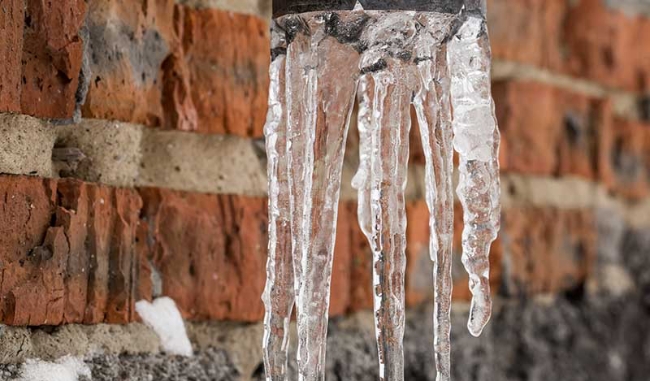Avoiding Frozen Pipes in Cold Weather: Pro Tips
Avoiding Frozen Pipes in Cold Weather: Pro Tips
Blog Article
The content in the next paragraphs relating to Prevent Frozen Pipes is particularly interesting. Check it out for yourself and decide what you think of it.

Cold weather can wreak havoc on your plumbing, particularly by freezing pipes. Here's how to prevent it from taking place and what to do if it does.
Intro
As temperature levels decrease, the danger of frozen pipelines rises, potentially causing expensive repairs and water damages. Recognizing exactly how to prevent icy pipes is crucial for home owners in chilly environments.
Comprehending Frozen Pipelines
What creates pipes to freeze?
Pipes freeze when exposed to temperatures below 32 ° F (0 ° C) for prolonged durations. As water inside the pipes freezes, it expands, putting pressure on the pipeline wall surfaces and possibly triggering them to burst.
Risks and damages
Icy pipelines can cause supply of water disturbances, home damages, and costly repairs. Burst pipes can flood homes and trigger substantial architectural damages.
Indicators of Frozen Water Lines
Determining icy pipes early can avoid them from bursting.
How to identify frozen pipelines
Seek lowered water circulation from taps, unusual odors or sounds from pipelines, and visible frost on exposed pipelines.
Avoidance Tips
Protecting vulnerable pipelines
Cover pipes in insulation sleeves or use warmth tape to safeguard them from freezing temperature levels. Concentrate on pipes in unheated or external locations of the home.
Home heating techniques
Keep interior spaces appropriately heated up, specifically locations with plumbing. Open up cupboard doors to allow cozy air to distribute around pipes under sinks.
Securing Outdoor Pipes
Yard hose pipes and exterior taps
Disconnect and drain yard tubes before winter season. Set up frost-proof faucets or cover exterior taps with insulated caps.
What to Do If Your Pipes Freeze
Immediate actions to take
If you think frozen pipes, keep faucets available to eliminate stress as the ice melts. Utilize a hairdryer or towels soaked in hot water to thaw pipes gradually.
Long-Term Solutions
Architectural changes
Think about rerouting pipes away from outside wall surfaces or unheated areas. Add added insulation to attic rooms, basements, and crawl spaces.
Updating insulation
Purchase premium insulation for pipes, attic rooms, and wall surfaces. Proper insulation aids keep consistent temperatures and decreases the danger of icy pipelines.
Verdict
Preventing frozen pipes requires proactive steps and quick reactions. By comprehending the causes, indications, and preventive measures, property owners can safeguard their plumbing during winter.
5 Ways to Prevent Frozen Pipes
Drain Outdoor Faucets and Disconnect Hoses
First, close the shut-off valve that controls the flow of water in the pipe to your outdoor faucet. Then, head outside to disconnect and drain your hose and open the outdoor faucet to allow the water to completely drain out of the line. Turn off the faucet when done. Finally, head back to the shut-off valve and drain the remaining water inside the pipe into a bucket or container. Additionally, if you have a home irrigation system, you should consider hiring an expert to clear the system of water each year.
Insulate Pipes
One of the best and most cost-effective methods for preventing frozen water pipes is to wrap your pipes with insulation. This is especially important for areas in your home that aren’t exposed to heat, such as an attic. We suggest using foam sleeves, which can typically be found at your local hardware store.
Keep Heat Running at 65
Your pipes are located inside your walls, and the temperature there is much colder than the rest of the house. To prevent your pipes from freezing, The Insurance Information Institute suggests that you keep your home heated to at least 65 degrees, even when traveling. You may want to invest in smart devices that can keep an eye on the temperature in your home while you’re away.
Leave Water Dripping
Moving water — even a small trickle — can prevent ice from forming inside your pipes. When freezing temps are imminent, start a drip of water from all faucets that serve exposed pipes. Leaving a few faucets running will also help relieve pressure inside the pipes and help prevent a rupture if the water inside freezes.
Open Cupboard Doors
Warm your kitchen and bathroom pipes by opening cupboards and vanities. You should also leave your interior doors ajar to help warm air circulate evenly throughout your home.

I ran across that article on How to prepare your home plumbing for winter weather when doing a lookup on the internet. Sharing is good. You won't know, you may be helping someone out. Thanks for taking the time to read it.
Details Report this page